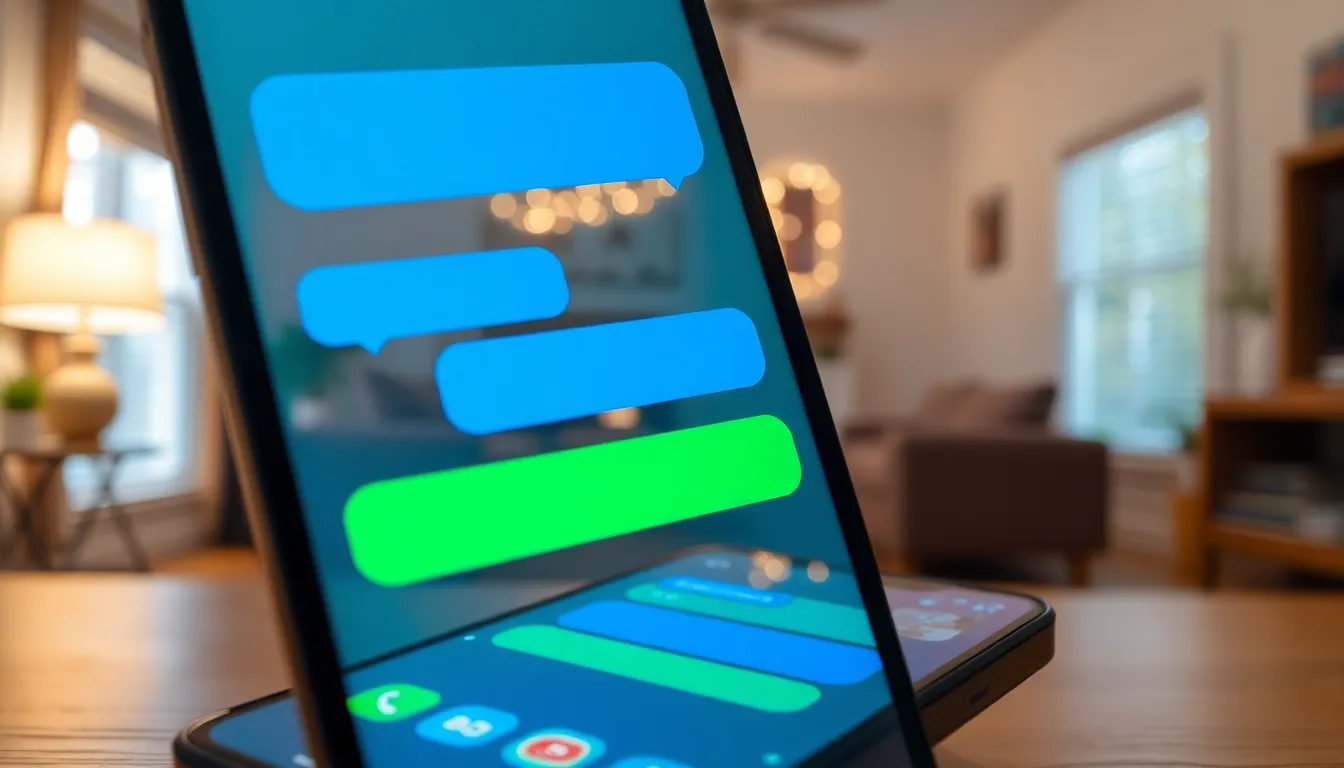Ever found yourself staring at your iPhone, wondering why your texts and calls seem to vanish into thin air? It’s like sending a message in a bottle, only to realize the ocean’s got a sense of humor. If you suspect someone’s given your number the ol’ heave-ho, you’re not alone.
In a world where ghosting isn’t just for dating, knowing if you’ve been blocked can save you from endless speculation and awkward moments. Imagine the relief of discovering whether your friend’s just busy or if they’ve taken your number off their VIP list. With a few simple clues, you can uncover the truth behind the silence and avoid those cringe-worthy “Did you get my text?” conversations. Let’s dive into the signs that might just reveal your iPhone’s dark secret.
Table of Contents
ToggleSigns That Indicate You Are Blocked
Several signs suggest that a person might have blocked your number on an iPhone. Observing these patterns can provide clarity when communication suddenly halts.
No Deliver Received Notifications
Text messages might not show any delivery notifications. When sending a message, there’s typically a “Delivered” status beneath the text bubble. If texts consistently lack this notification, it’s possible the person has blocked your number. Additionally, if previous conversations suddenly stop showing delivery confirmations, this can further indicate a blockage.
Voicemail Behavior
Voicemail might not behave as expected when calling a blocked number. Typically, calls will go straight to voicemail without ringing. If you notice that your calls consistently redirect to voicemail, the individual may have blocked you. Furthermore, upon reaching the voicemail, the standard greeting might be altered, indicating something unusual in that communication line.
Checking iMessage Status

Detecting whether someone blocked your number can often involve checking the iMessage status of your interactions. Two key indicators provide insights into your messaging situation: the bubble color and message delivery notifications.
Blue vs. Green Bubble
iMessages appear in blue bubbles, while SMS messages show in green bubbles. If texts consistently display green bubbles when you expect blue, it may indicate the recipient has blocked you. Similarly, a sudden shift from blue to green during ongoing conversations could suggest that the recipient’s iMessage is disabled or they blocked your number. This distinction serves as a clear signal that messages aren’t getting to the intended target as expected.
Message Delivery Issues
Message delivery notifications offer critical insight into your messaging status. When a message fails to show the “Delivered” label, it raises red flags. If texts never show delivery confirmations or consistently skip this status, blocking could be a reason. Additionally, if previous conversations previously displayed delivery confirmations and suddenly stop, this change also points toward possible blocking. Such delivery issues merit further consideration about the current state of communication.
Calling Patterns
Identifying calling patterns can reveal if someone has blocked your number. Observe how your calls behave when dialing that person.
Call Goes Straight to Voicemail
If a call consistently goes straight to voicemail, it raises a red flag. Normally, a ringing sound occurs before voicemail activates. In this case, immediate voicemail response often indicates that your number is blocked. The recipient might have silenced their phone, but if this continues, it suggests a more significant issue. Furthermore, listening to the voicemail greeting can provide more clues. If it sounds generic or if it’s an unexpected message, chances increase that you’ve been blocked.
Ringing Patterns Before Voicemail
Examining ringing patterns can also offer insights. Typically, a call rings for several seconds before directing you to voicemail. However, if your call consistently does not ring at all, this may hint at a blockage. An abrupt shift from ringing to immediate voicemail during prior conversations may also signal that your number isn’t welcome. Additionally, if the recipient’s phone shows a continuous busy tone for multiple attempts, that too suggests your number may no longer be recognized by their device.
Other Communication Methods
Communication can extend beyond calls and texts. Exploring other avenues might reveal significant clues about your relationship with the individual.
Social Media Indicators
Observing social media interactions can provide insight into being blocked. If a user suddenly becomes unresponsive to your messages or posts, this might signal a shift in communication. Inconsistent engagement, such as not being able to tag or comment on their posts, adds to this suspicion. A decline in response frequency on direct messages also indicates possible blocking. Reviewing their privacy settings could unearth restrictions limiting visibility for your account.
Email Correspondence
Email exchanges can also unveil whether someone has blocked you. Keep an eye on email disappearances. If messages bounce back with notifications indicating non-delivery, action has likely been taken. Furthermore, a complete lack of responses to previously engaged conversations signals possible communication breakdowns. Generally, a shift from quick replies to prolonged silence raises questions about the status of your connection. Noting patterns in communication might reveal underlying issues worth assessing.
Determining whether someone has blocked your number on an iPhone can be challenging but observing specific signs can provide clarity. The absence of delivery notifications and calls going straight to voicemail are key indicators. Additionally, shifts in message bubble colors and voicemail greetings can further confirm suspicions.
It’s essential to consider these patterns across all communication channels. By paying attention to inconsistencies in text messages, calls, and even social media interactions, one can gain a better understanding of their relationship status with the individual in question. Recognizing these signs can help avoid unnecessary confusion and allow for more informed decisions moving forward.

